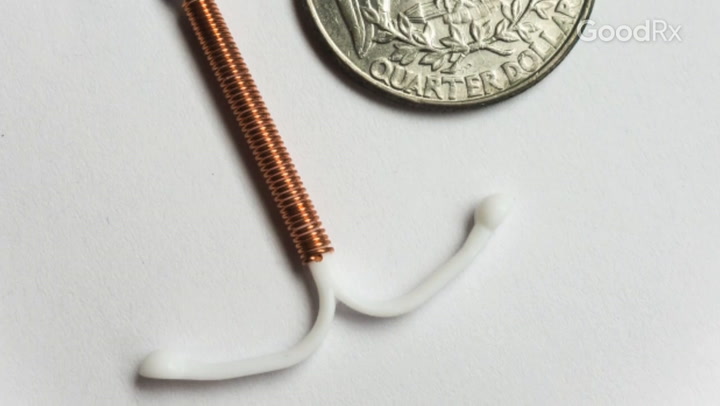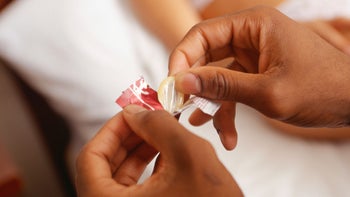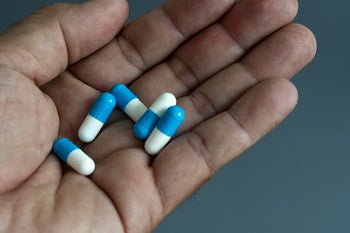
Why Does Sex Hurt All of a Sudden?
Key takeaways:
Many people experience dyspareunia — pain before, during, or after sexual activity.
Common causes of painful sex include infections, medical conditions, and hormone changes.
If you’re experiencing sex-related pain, talk with your primary care provider or a specialist. There are many treatments that can help.
The right treatment for you depends on the cause and what feels right to you.
Table of contents
A lot of the time sex feels good. But sometimes it can be painful. In fact, nearly 3 out of 4 women will experience pain during sex at some point, according to the American College of Obstetricians and Gynecologists. And men can have pain during intercourse, too.
If you’re experiencing pain during sex, you may be wondering what’s causing the pain and if there’s anything you can do. The good news is that pain during sex is often treatable. It all depends on what’s causing your symptoms and what types of activities are most enjoyable to you.
What is painful sex?
Sex can be painful for different people in different ways. And people can experience pain before, during, or after sexual activity.
You might experience pain when:
A partner penetrates your vagina or anus
You penetrate another person with your penis
You ejaculate
You have an orgasm
Some people feel pain in their genitals, such as their vulva, vagina, or penis. Depending on the cause, sex can also cause pain in other parts of your body — like your lower back or your pelvic area.
Read more like this
Explore these related articles, suggested for readers like you.
What is dyspareunia?
Dyspareunia is the medical term for pain before, during, or after sex.
It’s also sometimes called “genito-pelvic pain” or “penetration disorder.” Dyspareunia is most often used as a diagnosis for women. But anyone can have dyspareunia — including men and nonbinary people.
To be diagnosed with dyspareunia, you usually need to have experienced pain with sex for at least 3 months. It also needs to be bothersome to the point that it affects your personal life, self-esteem, or relationships.
10 common causes of pain during sex
Pain with sex can be caused by many different things — like infections, medical conditions, or a lack of lubrication.
Here are 10 common causes of sex-related pain.
1. Sexually transmitted infections (STIs)
Sexually transmitted infections (STIs) — like chlamydia, gonorrhea, or herpes — can make sex more painful. This is because some infections can cause inflammation and sores on your genitals and/or inside your body.
2. Hormone changes
Your estrogen levels go down during perimenopause and menopause. This can cause vaginal dryness and make sex feel uncomfortable and painful.
3. A lack of lubrication
Lubrication helps body parts slide more smoothly against each other. Not having enough lubrication can make both anal and vaginal sex more painful.
4. Genital irritation
Many soaps, lotions, and lubricants can irritate your genitals. If the skin on your penis or vagina is irritated, this can make sex painful.
5. Vaginal muscle spasms (vaginismus)
Vaginismus is a type of vaginal muscle spasm that can make penetration difficult and painful.
6. Constipation
Constipation is when you have trouble passing stool (poop). This can lead to fullness and discomfort in your belly, which can be painful during sex.
7. Fibroids
Fibroids are noncancerous growths in your uterus. They can cause many symptoms, including pain and discomfort during sex.
8. Endometriosis
This is when uterus-like tissue grows outside of your uterus. Just like fibroids, endometriosis can cause many different symptoms — including pain during sex.
9. Tight foreskin
If the foreskin on your penis is too tight, this can cause pain during penetration.
10. Swollen or inflamed prostate
A swollen prostate gland (prostatitis) can cause pain while you’re having sex, or when you ejaculate.
What can you do to make sex less painful?
If you’re having pain with sex, you may be able to make changes on your own that can help.
This might include:
Using the right size and type of condom
Adding more personal lubricant
Avoiding soaps or lotions that irritate your genitals
Communicating with your partner about what feels good and what hurts
Using spacers or positioners to make sex more comfortable
Experimenting with different sexual positions or activities
When to see a professional
In some situations, you’ll need support from a healthcare professional — like your primary care provider, urologist, or gynecologist. This is especially important if:
You have other symptoms, like a rash or a fever.
You have vaginal bleeding after intercourse, especially if you’re postmenopausal.
You’ve been having pain with sex for more than a few months.
Pain during sex is starting to affect your self-esteem, personal life, or relationships.
You feel anxious or fearful about sex.
Your pain is getting worse over time.
A lot of the time, your primary care provider can get you the help you need. But, in some cases, they might also refer you to a sexual health specialist.
Examples of sexual health specialists include:
These are licensed health professionals who have extra training in diagnosing and treating sexual problems — including some types of painful sex.
How do you treat painful sex?
It depends. The first step is to figure out what’s causing your pain. The next step is to decide on the best treatment.
Depending on what’s causing your symptoms, your treatment options might include:
Medications
Vaginal dilation
Creams or gels
Surgery
The bottom line
Pain during before, during, or after sex (dyspareunia) is a common problem. But there are many ways to make sex less painful. The key is to figure out what’s causing your pain, and then take steps to address it.
If you’re having pain during sex, it’s always a good idea to check in with a healthcare professional, like a primary care provider, midwife, urologist, or OB-GYN. They’ll be able to suggest changes you can make at home. And they may be able to treat the underlying cause of your sexual pain with medications, hormones, or surgery. They can also connect you with a sexual health specialist for further treatment.
Why trust our experts?


References
American Academy of Family Physicians. (2023). Dyspareunia. FamilyDoctor.org.
American College of Obstetricians and Gynecologists. (2022). When sex is painful.
Association of Certified Sexological Bodywork. (n.d.). What is Sexological Bodywork?
International Society for Sexual Medicine. (n.d.). What happens during sex therapy?
International Society for Sexual Medicine. (n.d.). What is pelvic floor physical therapy?
Johns Hopkins Medicine. (n.d.). What causes painful sex?
National Health Service. (2021). Why does sex hurt?
National Institute of Diabetes and Digestive and Kidney. (2018). Symptoms & causes of constipation.
Planned Parenthood. (n.d.). Uterine fibroids.
Tayyeb, M., et al. (2023). Dyspareunia. StatPearls.
The North American Menopause Society. (n.d.). Pain with penetration.




























